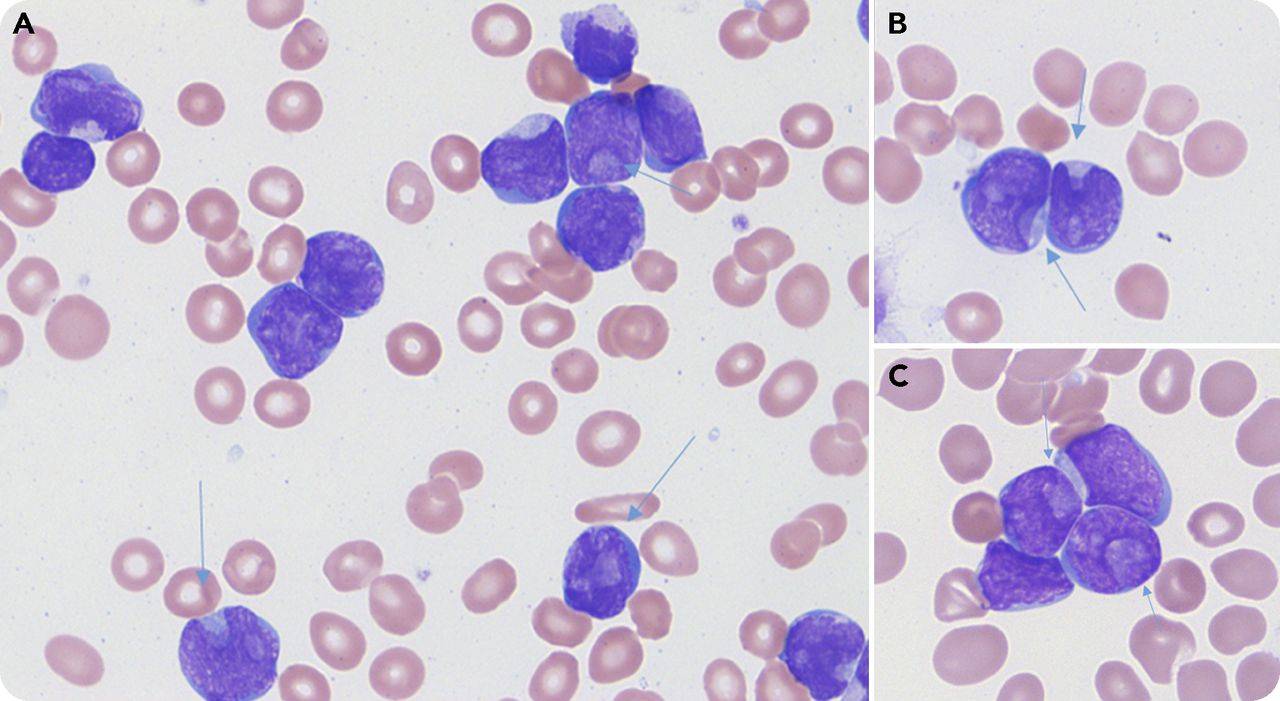Visiting Consultant Physician, Rockland hospital, Dwarka | Posted on
Normally, blood contains 3 cell types like RBC,WBC and platelets which are formed in inner portion of our bones which is called ' ***** marrow'. Sometimes due to some reasons, the stem cells which form WBC in the ***** marrow starts proliferation at a rapid but disorganised pace causing accumulation of immature WBC cell types which is unable to perform functions of normal WBC. Due to accumulation of these immature cells other cell types like RBC and platelets are also produced at decreased rate causing Anemia , thrombocytopenia along with leukopenia (decreased normal WBC). These accumulating immature cells progressively start spilling in the blood circulation from ***** marrow and infiltrate lymph nodes, liver ,spleen and other organs of the body causing various types of symptoms.

(Blood Journal)
Usually, most common age group affected by ALL is 0-14 yrs and after 50 yrs. It is most common cancer type in children.
SYMPTOMS
0
0 Comment
This decease progresses rapidly and create immature blood cells rather than the matured ones.
Symptoms -
1. Bone pain
2. Gum bleeding
3. Enlarged lymph nodes
4. Bruising
5. Fever
6. Frequent infection
Treatments -
chemotherapy or targeted drugs that specifically kill cancer cells can help treating Acute lymphoblastic leukemia.
0
0 Comment
Acute lymphoblastic Leukemia is a type of cancer that affects a person's blood and ***** marrow. Abbreviated as ALL, this problem is mainly characterized by overproduction of immature white blood cells. This is known as Lymphoblasts or leukemia blasts. ALL leads to problems like Anaemia, recurrent infection and frequent bruising and bleeding. The reason for occurrence of these disease is the inefficiency of the ***** marrow to produce red blood cells, white blood cells and platelets. These cells than separate from the ***** marrow and clog different organs like lymph nodes etc.
This cancer can be classified into different types:
@ Pre-B-cell All: This is generally found in adult cases wherein ALL occurs in B-lymphocytes in the early stages of ***** marrow development, thus known as precursor B-cell ALL.
@ B-cell ALL: A rare case which occurs in mature developing lymphocytes, thus also known as Burkitt type ALL.
@ T-Cell ALL: Occurring in about 20-25% cases,this affects the developing lymphocytes of the body. This type can be further sub categorized into early,mid or late cells depending on their maturity.
In Australia more than 300 cases of ALL are found every year. there is no particular age for this cancer to appear, but it is most commonly found in children of age 0-14 years. It is one of the most common type of leukemiain children
The major symptoms of ALL include anaemia, frequent or unexplained bruising and bleeding, repeated infections, slow healing, ***** and joint pains etc. However, in a lot of cases there were no symptoms and people were Diagnosed with it during routine check-ups.
0
0 Comment
| Posted on
0
0 Comment
